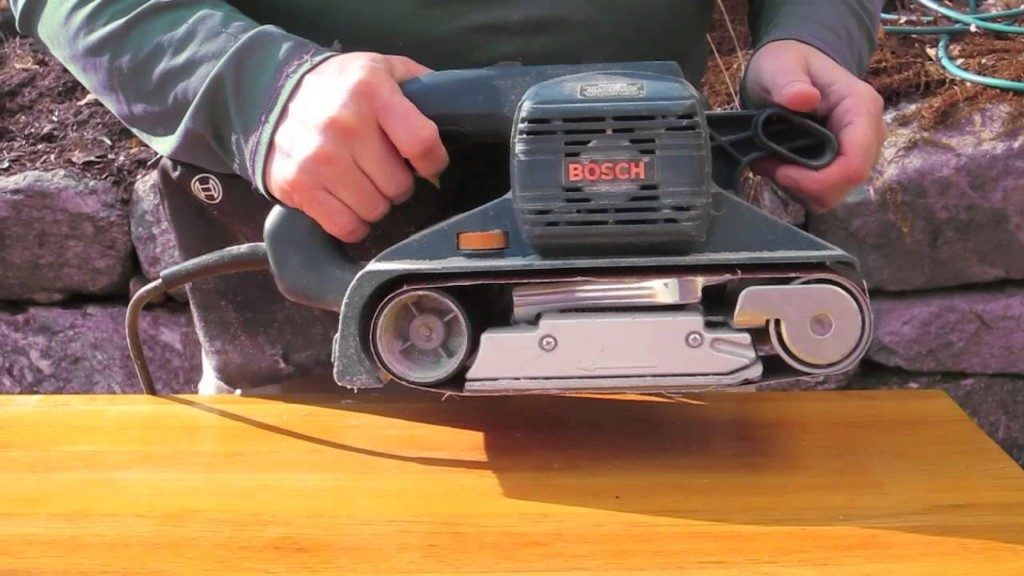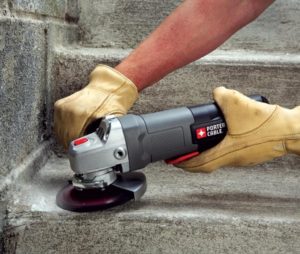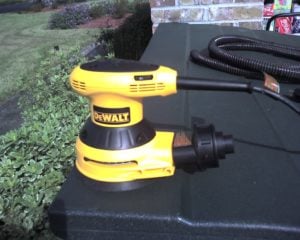
Sanders serve up a purpose you just won’t find with any other power tool and depending on the task you’re taking on you’re want to choose accordingly. There are numerous sanders to choose from, each best-suited for specific DIY projects that not only allows you to get desired results but will save you a whole lot of time.
The days of putting the finishing touches on workpieces by hand are a thing of the past. Some work better then others while removing material faster, while giving you a detailed, smooth finish. These power tools are enough to revive any piece of wood and turn it back into what it was meant to be. Sanding has become one of the most popular DIY projects and depending on what your next project is, there’s a lot to understand before jumping in.
The following Power Sander Buyer’s Guide breaks down everything you need to know including the various types, how to use them, pros and cons, safety tips, and much more.
Types of Sanders
Power sanders can be broken down into 6 main types with each explained below.
- Belt Sanders – Recommended for removing large amounts of stock fast and typically uses 50, 60 or 80-grit paper. A belt is stretched across two wheels and continuously moves causing the sanding motion.
- Disc Sanders – For larger projects, this sander is designed to sit on a workbench and uses a sanding disc to remove stock. Some models feature disk and belt sander combo giving users the best of both worlds.
- Drywall Sanders – Sanding drywall is one of the most tedious tasks, but with a power sander your time on task will be significantly lessened. Due to the amount of dusk emitted while sanding drywall, it’s recommended to use with outfitted with a vacuum system.
- Palm Sanders – As the name suggests, these sanders are smaller, compact and lightweight and fit in the palm of your hand. The vibration of the sander removes stock when sandpaper is attached and is recommended to be used with the grain of the wood to minimize scratches.
- Orbital Sander – Featuring round pads which move in a circular motion and can be used with or against the grain of the wood. Orbitals offer more versatility then most and it’s highly recommended to consider variable speed for more user control.
- Spindle Sander – Perfect for sanding curves, shapes and other unique designs. Mounted on a bench, the table has a spindle in the middle along with a saddling pad.
Random Orbital Sanders
Orbital sanders are probably the most versatile type and can be used for wide range of applications. Unlike other sanders, they oscillate (move) in a circular pattern minimizing any swirl marks and blemishes typically seen with other types.
There are two types of orbital sanders including random orbital and orbital. Below are the pros and cons of using a random orbital versus a standard model”
Pros
- Minimizes cross-grain scratches
- Removes more material when using the same grit sandpaper
- Most have a variable speed control for more aggressive sanding
- Most are outfitted with hook and loop sanding discs which are easier to change than conventional sandpaper
Cons
- More expensive
- Have been known to remove too much material if sanding in the same spot
- Round design makes it difficult to sand in corners
Typical Uses
The versatility of random orbit sanders allows them to be used on a wide array of sanding tasks including cabinetry, wood floors and everything in between. For the average do it yourselfer, they’ve become a must have and although a high-quality model will cost 2x more then orbital sanders, it’s an investment well worth it.
Cordless Vs Electric
Over the years cordless sanders have become increasingly popular as they offer the flexibility to be used anywhere, anytime. To sum it up, it all comes down to power vs convenience as electric models typically offer than cordless models. This was before new cordless sander innovations were introduced giving us nearly the same output as corded models.
Besides convenience, there are other advantages of using a cordless over an electric sander which are detailed below:
- Safer to operate with no cord getting in the way
- Can be used when no electricity is available like new construction
- Some cordless power tools come in a kit giving you more bang for your buck
Not all types of sanders offer a wide range of cordless models including spindle and benchtop sanders. Others such as belt, orbital and palm sanders offer numerous models to choose from and many which offer the same power output as corded models.
Sandpaper Grit
Sandpaper is what causes the sanding action due to the abrasive nature of the paper itself. The grit is a number which defines how fine or course the paper is with the lower the number best-suited for heavy-duty sanding and higher number for finishing touches.
Below are the various types of sander grit and typical uses:
- 80 – 100: thick stock removal, light pain, and finishes
- 100 – 150: prepping wood for staining and finish
- 180: for softer wood sanding
- 300 – 400: in between varnish and final sanding for a smooth finish
- 800: used for extreme hardwood
There are two main types of sandpaper including:
- Aluminum Oxide – multi-functional and cheaper, but won’t last as long
- Garnet – great for finish sanding, more expensive, and will last longer
Power Sander Safety Tips
Just like any other power tool, there are numerous safety tips you should consider when using a sander.
- Use in a well-ventilated area
- Wear a mask
- Wear safety glasses or shield
- Make sure the sander is unplugged when performing maintenance or changing out the sandpaper
- Make sure the sander is off before plugging in to a power source
- Check paper and sanding belts before using and replace any frayed belts
- Assure all cords are free from the sanding area
- Make sure power is turned off and clean dust from vents and motor regularly.
Power Sander Reviews
Below, we’ve compiled the most comprehensive and 100% unbiased sander reviews and broken them down categorically to make you’re buying decision simple. Feel free to browse any of the following and leave us a comment telling us what you think.
